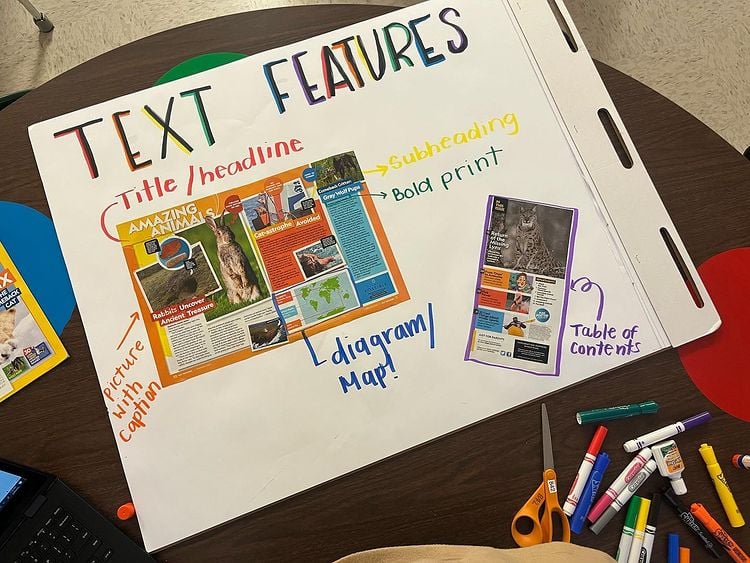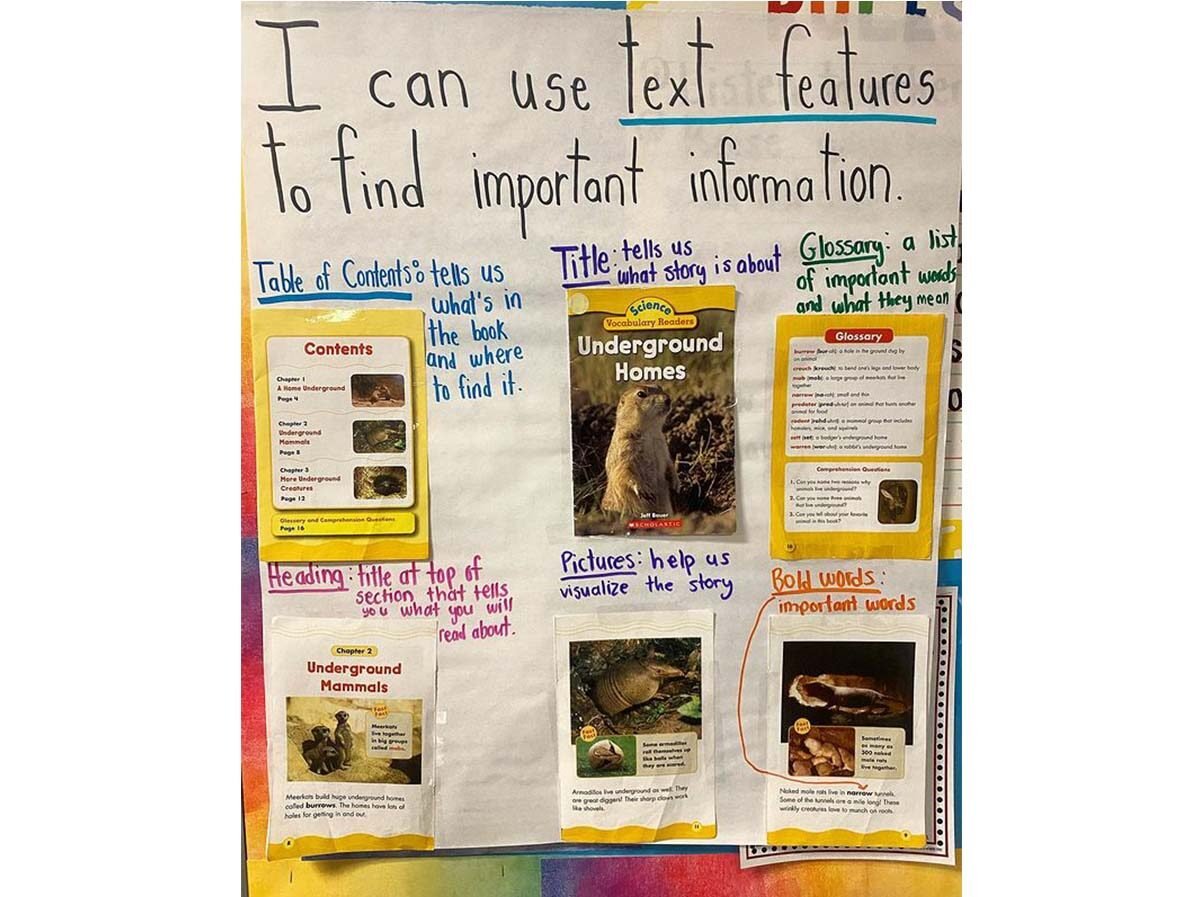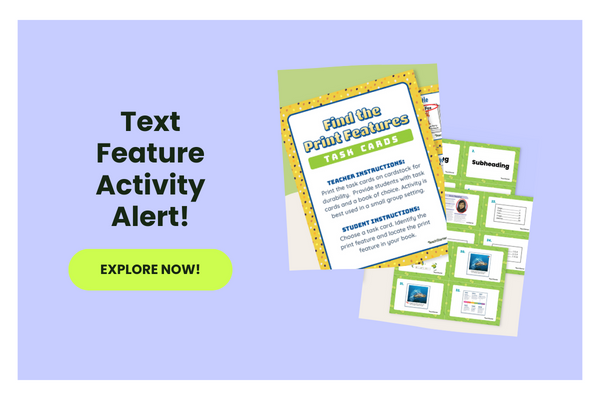Textbooks and other nonfiction informational texts are important tools for elementary teachers, but the first few times students encounter them can be daunting. Text feature anchor chart to the rescue!
Informational texts come packed with concepts, filled with vocabulary, and there is just so much information, which can be a challenge for second graders and other intermediate students who are used to reading simple passages. Like any of the dozens of other anchor charts teachers use every day, charts that focus on text features can help break down something that’s new and complex for students and serve as an easy reference point in the classroom as kids begin to wrap their brains around using informational texts day in and day out.
Stuck on just how to build a text feature anchor chart that will work in your classroom? We’ve asked a few teachers to share some of their favorite text feature anchor chart ideas to help you get started!
Text Feature Anchor Charts
Text Feature Vocabulary
A good text feature anchor chart can simply provide students with the vocabulary they need to identify text features. Teacher Lexi Holmes (@lexiloveslearning on Instagram) shared this chart she created to do just that, adding pops of color to make the vocabulary pop right off the page. By cutting out of real non-fiction texts, Holmes gives students real-world examples of what to look for on their own.

Download one of our favorite non-fiction text features activities — available in both digital and printable form!
How to Use Text Features
Second grade teacher Monique LaBarre (@goingfarwithmisslabarre on Instagram) shared this text feature anchor chart with us, and we love how it very simply lays out the ways students can use each of the features in a text to find information they need.
For example, the chart reminds students to check the glossary if they’re looking for the definitions of words used in the text or to refer to the table of contents to find out just what is in the book.

Text Feature Activities
Now that you’ve got your anchor charts set up, let’s talk text feature activities that make identifying these important parts of a text more fun … and more likely to be recalled.
Go on a Text Feature Scavenger Hunt
We love a good scavenger hunt on the Teach Starter team (check out a library scavenger hunt for K-3 or library hunt for upper elementary).
Hand out old magazines to your students — you can ask your school library or local library if they have extras — along with scissors, paper, and glue sticks. Set up white poster board on your classroom wall or whiteboard with the name of each text feature you want your students to find (you can also print out a list for your students).
Challenge your students to hunt through the magazines and scavenge the different types of features, cutting them out and gluing them to the correct poster board. Students have to work together to fill up each board with all the features they can hunt down.
Set Up Text Feature Surgery
Similar to the text feature scavenger hunt, this hands-on activity makes use of old magazines, letting students “surgically remove” them with scissors. They can then be pasted on paper which students label with their new vocabulary, or you can do as above — allowing students to paste the items on poster boards at the front of the room.
To add to the “surgery” theme, gather gloves, surgical masks, and surgical caps for each student in the class to use while they’re performing their text surgeries.
Bonus: Even if students are no longer wearing masks in your classroom, you can use the masks you’ve still got lying around to help your class get into “surgeon” mode!
Complete a Text Feature Match-Up
Print a text feature matching game that includes cards that describe each feature plus cards that feature the, well, features! This fun game can be played individually or in groups, challenging students to see how many good matches they can make. Let’s see who in the class remembers to refer to that anchor chart hanging on the wall.
Or change things up, and have students flip over all of the cards, playing it like a memory game.








Comments